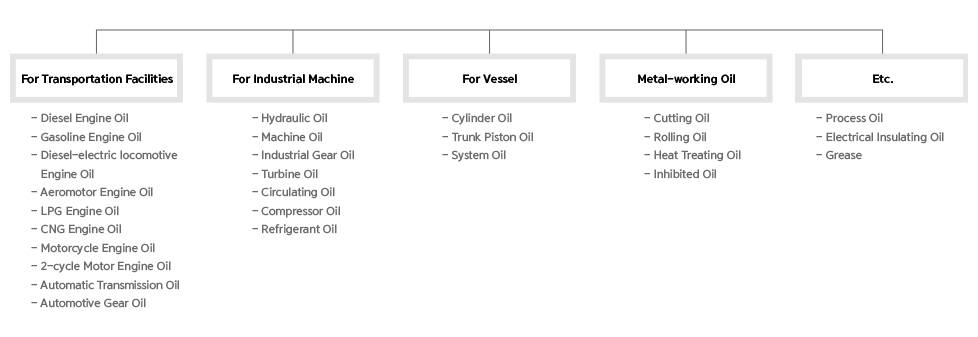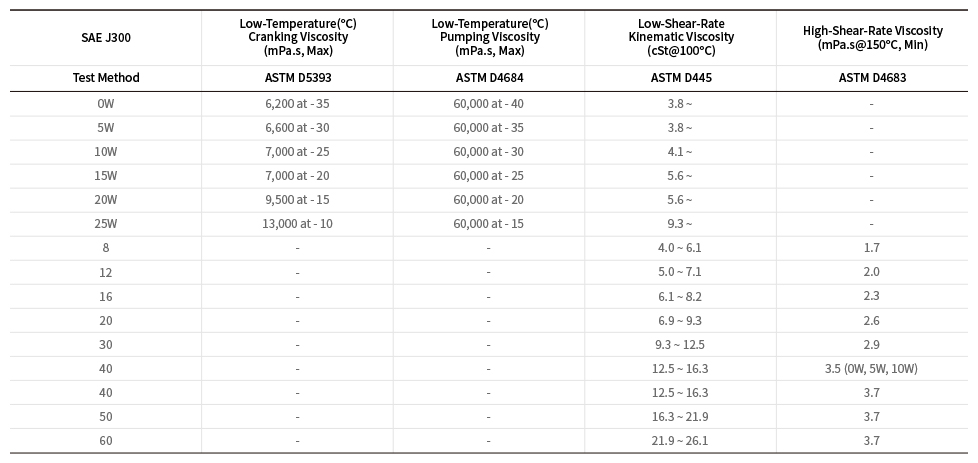
 Classification by raw material
Classification by raw material
A lubricant refers to a substance that makes parts of something move smoothly and liquid lubricants account for about 80% of it. Lubricants are developed using base oils produced from crude oil refining by adding additives according to mixing ratio for each use or developed by compounding chemicals such as PAO.

 Classification by use
Classification by use
Lubricants are largely used for automobiles, heavy industries, industries, and vessels.

 Classification by viscosity
Classification by viscosity
To understand lubricants for engine oil, it is required to read and understand the SAE (Society of Automotive Engineers) Index on the engine oil. SAE is an international standard established for the viscosity of engine oil by the Society of Automotive Engineers.
Single Grade
The products of grades expressed in a single number such as SAE 10W and SAE 30 and viscosity can be identified according to the viscosity grades in SAE Table below.

Multi Grade
The products of grades expressed in two kinds of numbers such as SAE 5W30 and SAE 10W40, which means the two SAE grades specified in the viscosity tables are both satisfied.
The viscosity change of multi-grade lubricating oils at high temperature is smaller than that of single-grade lubricating oils, offering economic benefits. Multi-grade lubricating oils are more liquid at low temperature than single-grade lubricating oils, so that they improve fuel efficiency of an internal combustion engine. Also most multi-grade oils have better wear resistance performance than single-grade oils, extending the life of parts of an internal combustion engine.
 Classification by performance
Classification by performance
The American Petroleum Institute (API) officially acknowledged standards for the quality of engine oil that suits each engine following the proliferation of automobiles in the 1900s and express them in signs which are classified largely into gasoline and diesel. Gasoline is marked in S (Service Category) and Diesel is marked in C (Commercial Category), and then added by A, B, C, D, and so on to distinguish their grades. Since the latest engine models are more required to work in harsher environment under tighter regulations, they satisfy more strict regulations than previous grades.










